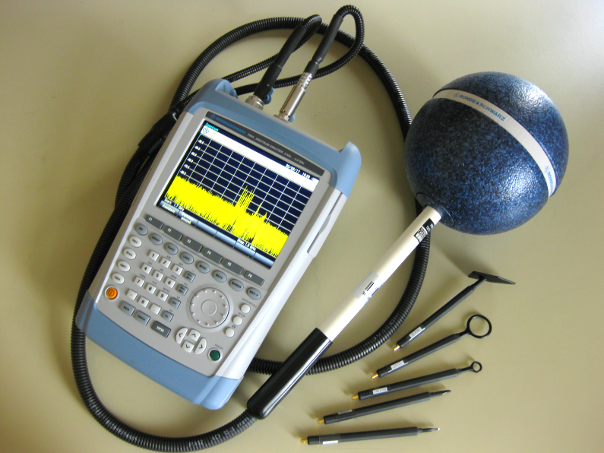Handheld Spektrumanalysator bis 3,6 GHz

- frequency range 9 kHz – 3.6 GHz
- measurement sensitivity -161 dBm at 1 Hz
- preamplifier for very weak signals
- demodulation bandwidth 20 MHz
- measurement uncertainty <1 dB
- 6.5″ display
- portable and lightweight
- battery up to 4.5 h
Portable handheld spectrum analyzers allow for the quick and easy analysis of electromagnetic signals on site. The main tasks of the handheld spectrum analyzer include the measurement of the frequency spectrum, the assessment of the signal integrity at base stations and broadcasting stations, as well as the measurements of field strengths and EMC-related emissions in laboratories. With the handheld spectrum analyzer all plots, graphs and tables of measurement results can be stored with a single keystroke. All measurement results and personal settings can be saved onto exchangeable SD-cards or USB memory stick. The comfortable handling of the device is made possible via the keyboard and setting dial. The big color display allows for a variety of settings and ensures a readable screen given bad lighting conditions.
The spectrum analyzer is the ideal measurement device for measuring field strengths via isotropic antennas. Measuring pulsed signals, for instance, is quick and easy to do: First, the isotropic broadband antenna is connected to the device. The spectrum analyzer then considers the individual antenna factors and calculates the field strenghts using the internal antenna elements that are aranged orthogonal to each other. Tweaking the bandwidth, frequency, and the reference levels allow for a good display of individual frequency components. EMC-related emissions on printed circuit boards, and the shielding of cables metallic enclosures are easy to localize and assess using the set of near-field probes for frequencies ranging from 30 MHz to 3 GHz. In general, the user is advised to employ a higher input attenuation so as to avoid damage to the device if emission levels are too high.
